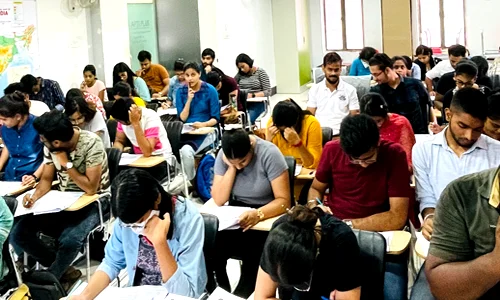



Recent transport crises show how limited public investment and rising private monopolies create both demand and supply shocks. Low rail funding and weak airline regulation expose flaws in the neo-liberal model. Strong public spending, fair taxation of the rich and tighter market oversight are essential to protect welfare.
Click to View MoreDGCA struggles to balance passenger safety with fast aviation growth, exposed by disruptions over new fatigue rules. While reforms like eGCA improved global safety rankings, staff shortages and limited autonomy persist. Converting DGCA into an autonomous Civil Aviation Authority is essential for managing India’s aviation boom safely.
Click to View MoreIndia faces a worsening road safety crisis as fatalities surged 80% from 2005 to 2023. Over-speeding drives deaths, but poor road engineering, weak enforcement, and unsafe infrastructure expose pedestrians and other vulnerable users. Saving lives demands safer road design, stronger policing, and faster emergency care.
Click to View MoreIndia must reform outdated land-use planning to make cities true economic growth hubs. Achieving the $30 trillion goal and Net Zero target needs cities with job-linked visions, regional planning, Natural Resource Budgeting, and Climate Action Plans that ensure sustainable, resilient, and holistic urban growth.
Click to View MoreIndia’s maritime sector is central to its trade, economy, and global influence, handling nearly 95% of trade by volume. The Maritime India Vision 2030 and Amrit Kaal 2047 aim to modernize ports, expand shipping and inland waterways, promote green and smart technologies, and boost skill development. Initiatives like the Sagarmala Programme, shipbuilding schemes, and inland waterway projects are driving economic growth, employment, and regional connectivity. With sustainability, innovation, and global partnerships at its core, India is charting a course to become a leading maritime power by 2047.
Click to View MoreIndia's economic growth is currently driven by strong public investment, while private domestic investment remains weak despite high corporate profits. Indian firms are increasingly investing abroad, but global uncertainties highlight the need to refocus capital within the country.
Click to View MoreIndia is leveraging global supply chain realignments to emerge as a major manufacturing hub. With flagship schemes like Make in India, PLI, and National Manufacturing Mission, sectors such as electronics, pharma, automotive, and textiles are witnessing rapid growth.
Click to View MoreThe Union Cabinet approved ₹69,725 crore package to empower maritime sector. Anchored on a four-pillar approach—financing, capacity, technology, and reforms—this initiative aims to make India a global shipbuilding hub. Key components include extending Shipbuilding Financial Assistance Scheme (SBFAS), establishing a ₹25,000 crore Maritime Development Fund (MDF), and creating a dedicated Shipbuilding Development Scheme (SbDS).
Click to View MoreThe Department of Fisheries and FAO are investing ₹369.8 crore to modernize three pilot harbors under the Blue Port Infrastructure project, integrating 5G and AI for sustainable, inclusive fisheries, aligning with India’s Blue Economy goals and long-term sectoral transformation.
Click to View MoreNITI Aayog’s proposed Manufacturing & Infrastructure Index to benchmark states on policies, logistics, and approvals, promoting competitive federalism. By guiding investors and policymakers, it seeks to diversify supply chains, cut geopolitical risks, and secure critical resources essential for India’s industrial growth.
Click to View MoreIndia is deploying AI in its power grid for real-time risk detection, cyber security, and market surveillance, enhancing resilience amid renewable growth. This initiative strengthens grid stability, safeguards markets, reduces cyber vulnerabilities, and promotes indigenous innovation, aligning with global best practices.
Click to View MoreInsurance Surety Bonds (ISBs) are a significant financial reform, offering a collateral-free alternative to traditional bank guarantees for government contractors. Driven by the IRDAI, ISBs aim to boost infrastructure development, ensure project performance, mitigate risks, and promote financial efficiency.
Click to View More
© 2025 iasgyan. All right reserved